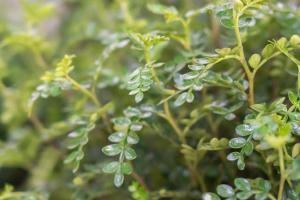Can I Use In-Ground Soil for Potted Plants?
As a gardener, it's natural to wonder if the soil you have in your garden can be used for your potted plants. After all, using the soil you have readily available can save you time and money spent on purchasing potting soil. However, it's essential to understand if using in-ground soil for potted plants is a good idea.
The Differences Between In-Ground Soil and Potting Soil
To understand if you can use in-ground soil for potted plants, it's important to know the differences between in-ground soil and potting soil. In-ground soil typically has a diverse composition of organic matter and soil particles, whereas potting soil is designed to be a more sterile growing medium. Potting soil contains a mix of peat moss, perlite, vermiculite, and other additives to provide drainage and aeration while preventing compaction. Using in-ground soil in a pot can lead to over-saturation and inadequate drainage, which can cause root rot and other plant diseases.
The Risks of Using In-Ground Soil for Potted Plants
Using in-ground soil in pots can cause several problems for your plants. As mentioned, in-ground soil tends to be denser and more compact than potting soil, which can lead to waterlogged soil, suffocating roots, and reduced oxygen. Additionally, in-ground soil may contain harmful organic matter or soil-borne diseases that can harm your plants when confined in a pot. While sterilizing in-ground soil through solarization or baking can eliminate these issues, it's still not recommended to use in-ground soil for potted plants.
When You Can Use In-Ground Soil for Potted Plants
Although it's generally not recommended to use in-ground soil for potted plants, some situations may allow for it. For example, if you've tested your in-ground soil and found it to be suitable for growing potted plants, you can use it. Additionally, if you've amended your in-ground soil with sterile potting soil, compost, or other organic amendments that can improve drainage, you may be able to use it for potted plants. However, it's always best to err on the side of caution and purchase high-quality potting soil to avoid potential problems.
The Importance of High-Quality Potting Soil
When it comes to potted plants, using high-quality potting soil is essential. Potting soil contains essential nutrients that plants need to thrive, such as nitrogen, potassium, and phosphorus. High-quality potting soil also provides excellent drainage and aeration, promoting healthy root growth, and preventing soil compaction. In contrast, using lower-quality potting soil or in-ground soil can lead to nutrient deficiencies, water retention problems, and stunted plant growth.
Conclusion
While it may be tempting to use in-ground soil for potted plants, it's generally not recommended. Using in-ground soil in a pot can lead to over-saturation, inadequate drainage, and soil-borne diseases. However, if you've tested your in-ground soil and found it suitable for potted plants, or if you've amended it with organic matter and potting soil, you may be able to use it. Ultimately, using high-quality potting soil is the best way to promote healthy plant growth and avoid potential problems.

 how many times do yo...
how many times do yo... how many planted tre...
how many planted tre... how many pine trees ...
how many pine trees ... how many pecan trees...
how many pecan trees... how many plants comp...
how many plants comp... how many plants can ...
how many plants can ... how many plants and ...
how many plants and ... how many pepper plan...
how many pepper plan...
































